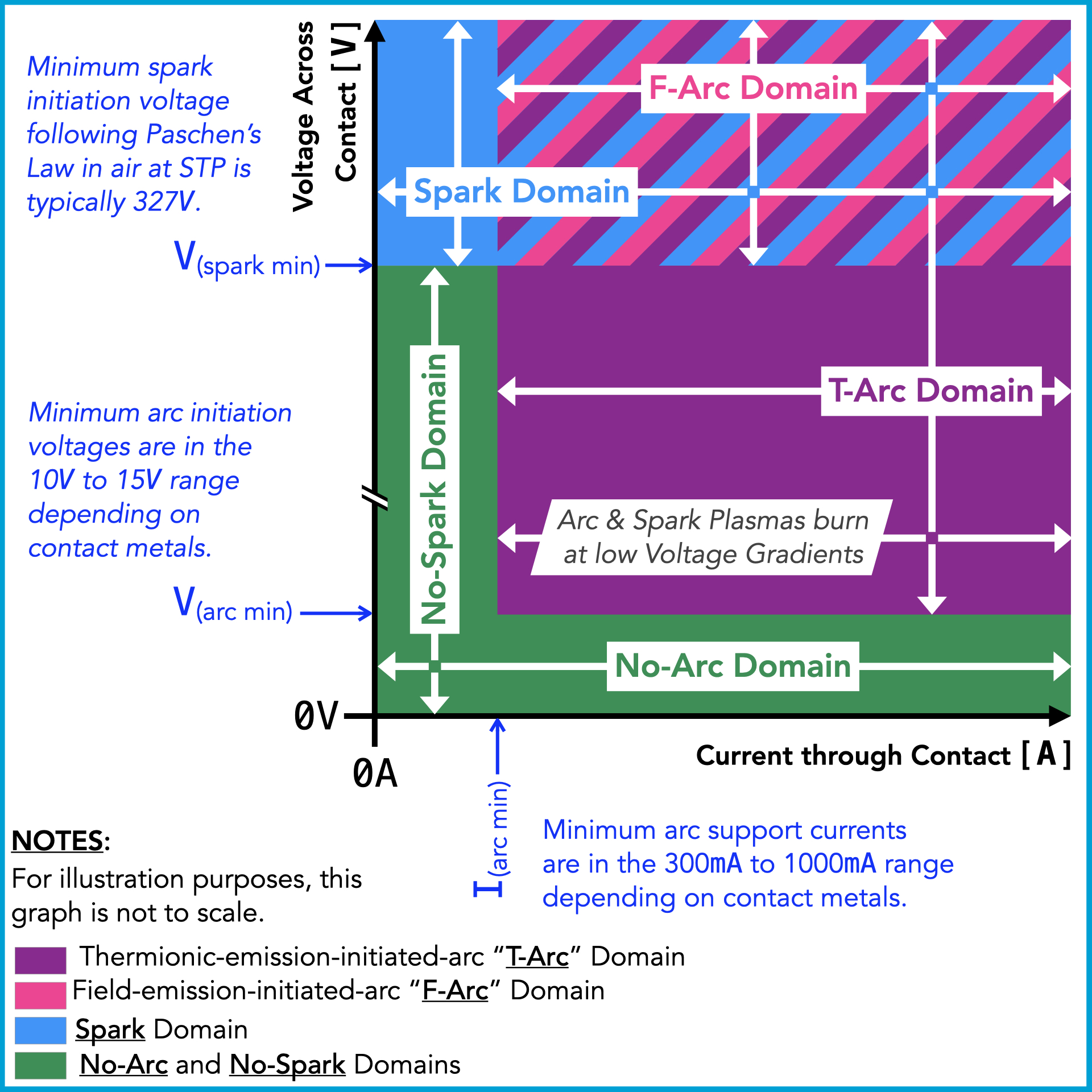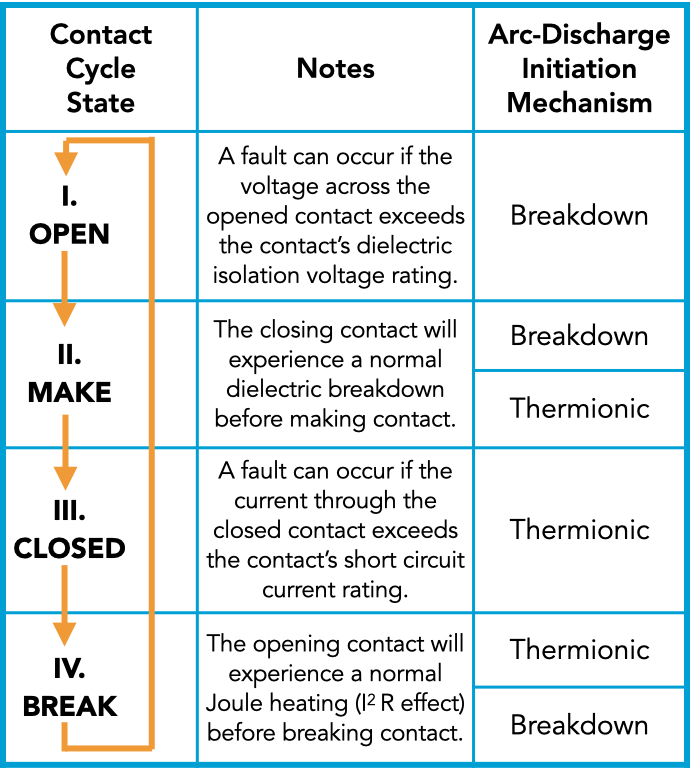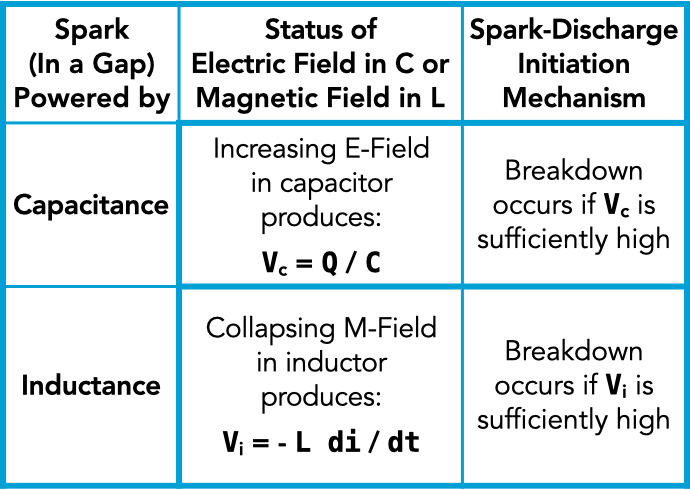“Arcs” and “Sparks” Are NOT the Same
This is not “common knowledge.” In fact, our insights are derived from more than 10 years of industrial research on contact arcing. Knowing that spark-suppressors are not arc suppressors and that spark quenchers cannot suppress arcs will help engineers, designers, and technicians protect contacts which will save money and even save lives!
Arcs and Sparks share similarities in that both are embodiments of an “arc-discharge” phenomena. This is one reason why so many people use the terms interchangeably. For example, Thomas Edison’s patents refer to arc discharges as “sparks,” while Nikola Tesla’s patents refer to the same phenomena as “arcs.” Today’s engineers, however, must differentiate between arcs and sparks if they are to properly and effectively mitigate the damage caused by contact current arcing. Fortunately, arcs and sparks may be easily differentiated by a combination of their initiation mechanism(s) and power source.

Two initiation mechanisms for Arcs; and one initiation mechanism for Sparks.
Note: Voltage (“V”) equation for “Sparks” shown in Sparks by Initiation table below.

The Domains of Existence for Arcs and Sparks.
When initial conditions are favorable, both Arcs and Sparks are initiated before their plasmas ignite. There is a more than 300V difference between the minimum arc initiation voltage, V(arc min), and the minimum spark initiation volt-age, V(spark min), meaning that arcs and sparks occupy completely different “domains of existence”.
Arcs are either a thermionic-emission-initiated-arc (T-Arc) or a field-emission-initiated-arc (F-Arc), and are maintained by a continuous supply of power (think of an arc welder or a Xenon arc lamp). An arc’s existence consists of the following consecutive elements:
1. Initiation — (“birth”) either T-Arc or F-Arc
2. Plasma — (“life”) consisting of the consecutive elements:
2a. Ignition
2b. Burn, and
2c. Extinction (starved of current or cooled to extinction)
3. Dissipation — (“death”) dispersion of ionization, heat, and debris
4. Possible Re-Initiation — (“afterlife”) either re-initiated arc or re-ignited plasma
Sparks, in contrast, are only initiated by field emissions, and briefly supported by a quickly-depleted power source such as a capacitor, an inductor, or a piezoelectric ignitor (think of lightning, an electrostatic shock “zapping” your finger, or igniting a gas grill).

Arcs by Contact Cycle:
List of arcs that may occur in each stage of the contact cycle.

Sparks by Initiation:
Two examples of spark suppression and types.
